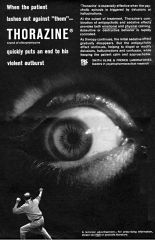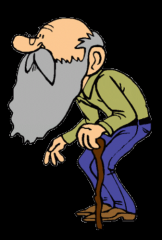![]()
![]()
![]()
Use LEFT and RIGHT arrow keys to navigate between flashcards;
Use UP and DOWN arrow keys to flip the card;
H to show hint;
A reads text to speech;
57 Cards in this Set
- Front
- Back
|
=== ANORECTAL === |
=== ANORECTAL === |
|
|
Anorectal Abscess,management? |
Surgical drainage - Abx if DM, immunocomp, cellulitis |
|

=== MENTAL HEALTH === |
=== MENTAL HEALTH === |
|
|
Major depressive episode |
5+ SIGECAPS for 2 weeks incl depressed mood |
|
|
Minor (subsyndromal) depression is characterized by |
2-4 SIGECAPS x 2 weeks |
|
|
dysthymia? |
Minor depression sx x 2 years |
|
|
When to treat grieving patient? |
ifbereaved person meets the criteria for major depression 2 months after the loss |
|
|
psychiatric referral indicated for depression when: |
(1) suicidal or homicidal ideation, (2) bipolar disorder, (3) psychotic symptoms, or (4) symptoms refractory to at least two medications. |
|
|
treatment of depression, the best outcomes are achieved with |
combination of medication and psychotherapy |
|
|
these anti-depressivesmay be especially helpful in patients with concomitant pain syndromes |
SNRI |
|
|
only nonoral antidepressant available |
transdermal preparation of selegiline |
|
|
the most effective nonpharmacologic intervention for generalized anxiety |
CBT (equal efficacy for pharmacology) |
|
|
generalized anxiety disorder |
excessive anxiety and worry about various events or activities on most days for at least 6 months, with difficulty controlling worrying |
|
|
pharamacotherapy for GAD / panic disorder? |
-SSRIs and SNRIs - Buspirone (slow to work) - Benzo => risk of dependence, avoid if hx of subs abuse |
|
|
PTSD is characterized by |
at least 1 month of symptoms that include intrusive thoughts about the trauma, nightmares or flashbacks, avoidance of reminders of the event, and hypervigilance with sleep disturbance |
|
|
PTSD tx? |
CBT SSRI / TCA Prazosin for nightmares avoid Benzo |
|
|
Social anxiety d/o tx |
Psychotherapy SSRI / MAOI |
|
|
OCD tx? |
1st line: CBT also SSRI or clomipramine (a TCA) |
|
|
Intermittent explosive disorder? |
repeated episodes of aggressive violent behaviors grossly out of proportion to the situation. Examples include road rage, severe temper tantrums, and domestic abuse - after: remorse / embarrassment |
|
|
Intermittent explosive disorder, tx? |
CBT and pharmacotherapy. - Mood stabilizers and anticonvulsant agents (carbamazepine, phenytoin, and lithium) - SSRI if depressed |
|
|
tx for acute manic episodes, |
- either lithium or valproate + atypical antipsychotic agent such as olanzapine, quetiapine or aripiprazole - avoid SSRI |
|
|
conversion disorder |
single pseudoneurologic symptom that is not explained by a medical evaluation and often follows lay understanding of neurology (for example, hemiparesis that does not follow crossed corticospinal tracts |
|
|
hypochondriasis
|
patients misinterpret normal bodily sensations and are afraid these symptoms are manifestations of serious illness
|
|
|
malingering vs factitous d/o |
Patients with malingering do this for external gain (such as avoidance of work), whereas those with a factitious disorder do so in order to remain in the sick role. |
|
|
somatoform d/o tx? |
- CBT - primary care visits should focus on the evaluation of new or changed symptoms and functioning with somatic symptoms rather than elimination of symptoms. |
|
|
bulimia tx? |
1st line: CBT - Fluoxetine or sertraline - Topiramate has been shown to reduce binge eating and promote weight loss |
|
|
Length of time for schizo dx? |
Diagnosis is based on the presence of signs and symptoms for at least 1 month in duration, with some manifestations of the disease present for at least 6 months |
|
|
ADHD tx in adults? |
- usually shows gradual improvement with age - verify the ongoing need for medication with periodic “drug holidays” in well controlled patients - Atomoxetine : SNRI |
|
|
anorexia, tx |
CBT Avoid TCA / Bupropion Antidepressants alone don't cause weight gain |
|
|
iuk |
klhkljh |
|
|
kjhkjlhkj |
kljhkljh |
|
|
kljhkljhkj |
kljhkjh |
|

=== GERIATRIC === |
=== GERIATRIC === |
|
|
timed “Up & Go” (TUG) test?
|
– rise from a chair, walk 10 feet, turn around, walk back, and sit down again
– usu < 10 s. If > 14s then incr risk for falls. |
|
|
The Institute of Medicine recommends a vitamin D intake of
|
600 units/d for all men and women aged 51 to 70 years old and 800 units/d for men and women older than 70 years.
|
|
|
MMSE scores for dementia?
|
– 24 to 25 out of 30 => mild impairment–19 to 24 => mild dementia,
– 10 to 19 suggest moderate dementia |
|
|
Depression tx in elderly?
|
– r/o medical cause
– tx improves mortality – SSRI ok (AE = SIADH, GI bleed) – stimulants if apathetic – mirtazapine if not eating – ECT if refractory |
|
|
The most common cause of hearing loss
|
presbycusis, or age–related hearing loss. – results in high–frequency hearing loss, which typically impairs sound localization and hearing the spoken voice (particularly in noisy environments).
|
|
|
whispered voice test?
|
(examiner stands 2 feet behind a seated patient and assesses the ability of the patient to repeat a whispered combination of numbers and letters)– as good as audiometry
|
|
|
The most common causes of visual impairment in older persons
|
refractive errors, cataracts, and age–related macular degeneration (AMD)
|
|
|
The American Academy of Ophthalmology recommends comprehensive eye examinations
|
every 1 to 2 years for persons 65 years or older who have no risk factors
|
|
|
Urinary incontinence is categorized as
|
(1) urge incontinence (loss of urine accompanied by sense of urgency; caused by detrusor overreactivity); (2) stress incontinence (loss of urine with effort, coughing, or sneezing; caused by sphincter incompetence);
(3) mixed urge and stress incontinence; and (4) overflow incontinence (caused by outlet obstruction). |
|
|
Functional incontinence
|
not getting to the toilet quickly enough
|
|
|
the two most effective behavioral therapies for incontinence
|
– Pelvic floor muscle training (PFMT, or Kegel exercises) – bladder training/urge suppression techniques
|
|
|
considered first–line therapy for patients with stress incontinence and is of likely benefit in patients with mixed urge and stress incontinence.
|
pelvic floor muscle traiing
|
|
|
effective in elderly nursing home residents with functional incontinence.
|
Prompted voiding (periodically asking the patient about incontinence, reminding and assisting the patient to go to the toilet, and providing positive reinforcement for continence)
|
|
|
In patients with stress incontinence for whom PFMT has not been successful, what is another option
|
duloxetine a serotonin and norepinephrine reuptake inhibitor
|
|
|
first line therapy for urge incontinence
|
anticholinergic antimuscarinic medications are first–line therapy. Options include oxybutynin, tolterodine, fesoterodine, darifenacin, solifenacin, and trospium.
|
|
|
Medications that have been found to be ineffective for incontinence
|
pseudoephedrine (an α–agonist), oral estrogens (may worsen incontinence), and transdermal and vaginal estrogens
|
|
|
Stage I ulcers treatment
|
can generally be treated with transparent films and do not require debriding
|
|
|
Stage II ulcers treatment
|
occlusive dressing to keep the area moist. Wet–to–dry dressings should be avoided because debridement is usually unnecessary at this stage.
|
|
|
Stage III and IV ulcers treatment
|
generally require surgical or nonsurgical debridement, treatment of wound infection, and appropriate dressings based on the wound environment
|
|
|
For nonhealing wounds that are stage III or higher
|
imaging to rule out underlying osteomyelitis is indicated
|
|
|
lk;jlk;jjk |
lkjlkj |
|
|
lklkj |
lklkjk |
|
|
lklkjl |
lkjl;kjlkj |
|
|
lkjlkjhl;k |
lkjlkjlk |

